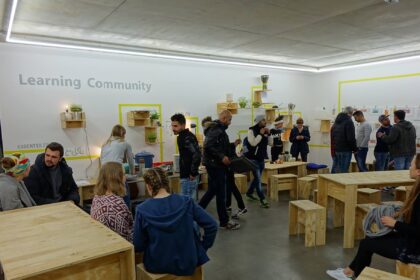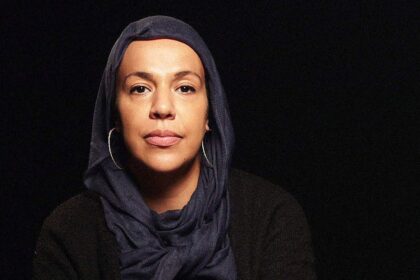Brexit, Austerity and Social Practice
Kim Charnley
In 2016, Brexit showed the power of populist-nationalist movements to transform the political landscape. In its wake, Britain’s exit from the EU has become a constitutional crisis. At the time of writing, after two years of negotiations, the plan to exit the EU is very likely to be rejected by Parliament. It is possible that Prime Minister Theresa May’s government will fall as a result. Were that to happen, it is difficult to predict how the impasse would be resolved: perhaps a general election, perhaps another referendum.
These gathering storm-clouds have been interspersed with moments of great hope. The 2017 election, called by Theresa May to capitalise on a double-digit poll lead, was defined by a remarkable campaign by Labour, driven by a left-wing manifesto, which came close to unseating the Conservative government. But, the xenophobic sentiments that were an integral part of the Brexit debate have not disappeared. The islamaphobic demagogue Stephen Yaxley-Lennon (who calls himself ‘Tommy Robinson’) has a dangerous level of influence and is seeking to put himself in a position to channel resentment at the ‘betrayal’ of Brexit.[1] Lennon receives financial support from right-wing groups around the world: a key factor in this ‘post-Global’ situation is that the far-right feeds ethno-nationalism but is coordinated across national boundaries.
Crises are always causally complex, but it is certain that the policy of austerity enacted in the UK since 2010, which involved savage cuts to funding for social provision at all levels, helped to prepare the ground for Brexit. The effect of these neoliberal ‘reforms’ on the social fabric has been disastrous. To cite one recent example, Government statistics show that around a third of children in the UK live in relative poverty, with numbers rising by around 100,000 a year.[2]
Social practice is a contemporary art form that has thrived under neoliberalism, even as the infrastructure of social protection and social solidarity has been dismantled, a point made by Gregory Sholette in his essay ‘Delirium and Resistance after the Social Turn’.[3] This tendency has continued. Austerity has helped to shape the character of social practice, and a debased version of it contributes to gentrification, as critic and art historian Larne Gogarty has observed.[4]
This cynical abuse of place making results in what Stephen Pritchard has described as a divisive form of ‘social capital art’.[5] It would be wrong, however, to suggest that social practice, or community artists are solely responsible for these problems. In fact, rampant gentrification in major cities means that all kinds of art can become drawn into the penumbra of property speculation. Ryan Gander, for example, has created ‘doormats, door numbers and doorbell sounds’, for Balfron Tower in East London.[6] Designed by Ernö Goldfinger and completed in 1967, the rediscovery of this building as a brutalist classic led to its original social housing tenants being ‘decanted’ to allow for luxury redevelopment, complete with neo-conceptualist fixtures and fittings.
Increasingly, the boundaries of the art institution become fuzzy, and contemporary art is directly implicated in social questions, intentionally or not. As a result, the ethical dilemmas that are integral to social practice become more salient and more difficult to resolve. In Britain, aside from those projects that are sponsored by developers, key arts funding derives from National Lottery, which has been criticised for being a ‘stealth tax’ on lower income groups, who are most likely to buy tickets.[7] Some argue that Art Council funds should be more closely under the control of grassroots communities, to support initiatives that they value. Certainly, cultural policy needs to be pushed further in the direction of participatory democracy in Britain, as the Movement for Cultural Democracy’s manifesto has recently proposed.[8]
While these contradictions are real, it would be overly simplistic to maintain that all state-funded arts activities merely reproduce social inequality. The situation is more complex than that. Some of the work that is funded by the Arts Council ‘People and Places’ programme is undertaken by artists and commissioning agencies who consciously engage with the problems involved in socially-engaged practice. At the ‘Social Making’ conference run by the Community Interest Company, Take-a-Part in Plymouth in June this year (the conference indicates both the vitality and professionalization of social practice) Patrick Fox, the director of commissioning agency Heart of Glass demonstrated this, speaking powerfully of the need for artists to stand in solidarity with community-oriented work which has been defunded because of austerity-driven cuts in public services.
Based in St Helens, a large town in the North West of England, Heart of Glass commissions social practice art that imaginatively reinvents communal identity in a post-industrial, economically deprived area. The work that has been produced to date reflects, in Fox’s words, an ‘unapologetic civic mission’. A good example is Mark Storor’s Baa-baa-baric, have you any pull?, a twelve-year residency working with generationally-defined groups of St Helens residents. Among the participants, a ‘Council of Wisdom’ is made up of older men and an ‘army of beauty’, is comprised of primary school children. In a recent intervention, the ‘army of beauty’ processed through St Helens giving out posies of flowers before reading their Children’s Charter to local dignitaries on the steps of the town hall.[9]
Seemingly, this work invokes a naively idealised vision of community in its equation of age with wisdom, and youth with beauty. The involvement of local government and police in the project may have been facilitated by this surface simplicity, though it is also calculated to bring fundamental social questions into a space of civic participation. Storor states that the central question of Baa-baa-baric, have you any pull? is: ‘Is the most brutal act of barbarism civilisation?’. The provocative implications of this statement are intended, I think, to become clearer over time. The project will last twelve years because this timespan means that the project continues after members of the ‘Council of Wisdom’ have passed the threshold of life expectancy for men in St. Helens, which is 10.2 years below the national average for men in the UK.[10] Their participation in the project stands to become ‘a voice from beyond the grave’, in Storor’s words. Although the events that comprise Baa-baa-baric have a feel of homespun spectacle, their extended duration is used to provide existential bite. The work is not explicitly linked to Brexit, but it is unavoidably part of the context. St. Helens, typical of Northern towns hit by post-industrial disinvestment, voted to leave the EU by a margin of almost 60% to 40% remain.


Although Arts Council funding is in decline overall, Brexit has given anti-elitist cultural work greater salience. It seems that a larger proportion of funding is now oriented toward projects that promise to make contact with the marginalised demographic that turned out in the referendum of 2016. Brexit made self-evident the political dangers involved in the democratic deficit of neoliberalism. There is an intense wariness of obvious elitism in cultural policy. Social practice seems to promise that challenging work might be created in such a way that it overcomes the class-divisions that are enshrined in high culture.
Of course, art cannot deliver on this promise in a society based on inequality and exploitation. Real progress would require a change of government, at the very least; Corbyn’s Labour party is progressive in its engagement with the arts, promising investment and alert to the widespread precarity and exploitation of labour in the cultural field.[11] But, in the short term, a change of government is by no means certain, despite the surge of optimism surrounding the election of 2017. In the meantime, criticism needs to be measured and carefully targeted. The fact that creative placemaking is sometimes used cynically, in the service of gentrification or artwashing, does not mean that social practice always falls into this trap. And, if we are to establish a popular front for our times, then the institutions that have grown up around social practice should be part of it.
As for the political potential of social practice art, this is an issue that requires more space than I have available here. The problem can be approached with a simple question: what is a social practice? Artistic debates in this area tend to identify social practice with the agency and mutability of collectivity, as in Nato Thompson’s ‘living as form’.[12] Typically, the message is that art has potential to reshape the visibility, the politics and perhaps the meaning of a social experience. Although these ideas are informed by the legacy of participatory democracy, their theoretical optimism can have unintended consequences. Optimistic narratives of community agency are exactly those that are instrumentalised by gentrifiers, for example.
By contrast ‘social practice theory’, which has been influential on debates in sustainable design, conceives of social practices as patterns of social behaviour that do not change easily. For example, individually and collectively we continue to generate mountains of waste even when we recognise the dangers of climate disaster. The problem posed by social practice theory is that conscious attitudes may not fundamentally affect behaviour, because behaviour is set in networks that are held by the norms and material structures of social experience.[13] Might we view social practice art differently, were we to examine its claims in relation to these stubborn habitual elements of experience?
In this period of crises, it is interesting to ask whether revolutionary change, or resistance to it, is the most radical implication of social practice art. As the institution of art transforms, approaching what Sholette has called ‘bare art’, the politics of social practice may change in unpredictable ways.[14] Shaped by neoliberal policies, the institutional network that supports social practice art in the United Kingdom is lean, precarious and, in the final analysis, fragile. Nothing is guaranteed to last. Nonetheless, social practice provides one home for those whose political and ethical commitments are oriented toward diversity and radical democracy. Rather than see the success of social practice as an indication of political failure, I prefer to see it as one among the left methodologies that can be used in a struggle to overcome the reactionary attitudes that feed populist-nationalism. To be successful, this project requires an international network to share knowledge and strategies, with as much vigour as is currently displayed by the far right.
Kim Charnley is an art theorist and art historian whose research explores the way that the boundary between institutional critique and art activism has been constructed and negotiated since the 1970s. This work forms part of larger project to understand the reorganisation of cultural politics in response to the social and economic crises that have accompanied the rise of neoliberalism. In 2017 he edited and provided an introduction for Delirium and Resistance: Activist Art and Capitalist Crisis, by Greg Sholette. He has published essays and reviews in Art Journal, Art & the Public Sphere and Historical Materialism.
Notes
[1] Claude Moraes “The Far Right is Organised and Growing. Those Nazi salutes are serious” Guardian, Thursday 14 June 2018: https://www.theguardian.com/commentisfree/2018/jun/14/far-right-nazi-tommy-robinson-racist-movements-donald-trump
[2] Mary Bulman “Number of Children in Poverty surges by 100,000 in a year, figures show” Independent, Thursday 22 March, 2018: https://www.independent.co.uk/news/uk/home-news/child-poverty-increase-children-family-benefit-households-a8268191.html
[3] Gregory Sholette, “Delirium and Resistance after the Social Turn” Field issue 1, Spring 2015. See also: Gregory Sholette Delirium and Resistance: Activist Art and Capitalist Crisis Pluto Press, 2017.
[4] Larne Abse Gogarty “Art & Gentrification” Art Monthly February 2014.
[5] Dr Stephen Pritchard “Artwashing: Social Capital & Anti-Gentrification Activism”, June 17, 2017: http://colouringinculture.org/blog/artwashingsocialcapitalantigentrification
[6] Jonathan Bell, ‘London’s Brutalist Balfron Tower is Brought Back to Life’ Wallpaper, July 2018: https://www.wallpaper.com/architecture/balfron-tower-brutalism-london-londonewcastle-studio-egret-west-brody-associates See also: James Butler ‘Social Cleansing in Tower Hamlets: interview with Balfron Tower evictee’, Novara Media, 2013: http://novaramedia.com/2013/08/20/social-cleansing-in-tower-hamlets-interview-with-balfron-tower-evictee/
[7] James Doeser, ‘Funding the Arts through the National Lottery is not a winning solution,” Art Newspaper 18th October 2018: https://www.theartnewspaper.com/comment/funding-the-arts-through-the-national-lottery-is-not-a-winning-solution
[8] The Movement for Cultural Democracy manifesto: https://culturaldemocracy.wordpress.com/
[9] Baa Baa Baric, have you any Pull? Heart of Glass website: http://www.heartofglass.org.uk/thought-provoking-acts-in-baa-baa-baric/
[10] According to a Public Health England report from 2017: https://www.sthelensccg.nhs.uk/media/1449/health-profile.pdf
[11] Labour Party Manifesto, 2017. See ‘Culture for All’, p.95: https://labour.org.uk/wp-content/uploads/2017/10/labour-manifesto-2017.pdf
[12] Nato Thompson, “Living as Form” in Thompson (ed.) Living as Form” Socially Engaged Art from 1991-2011 Creative Time and MIT Press, 2011, pp. 16-33.
[13] For example: Elizabeth Shove, Mike Paintzar & Mark Watson The Dynamics of Social Practice: Everyday Life and how it Changes, Sage, 2012. I am also indebted to Professor Cameron TonkinWise for his exposition of social practice theory in sustainable design at ‘Mini-Making Futures’ Pymouth College of Art, June 2017.
[14] Gregory Sholette Delirium and Resistance: Activist Art and Capitalist Crisis Pluto Press, 2017.










